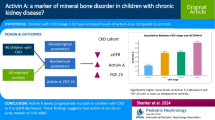Abstract
Chondroitin sulfate (CS) compounds are commonly used to manage OA symptoms. Recent literature has indicated that abnormal subchondral bone metabolism may have a role in the pathogenesis of OA. The aim of this study was to access the effects of chondroitin sulfate obtained from bovine, fish and porcine sources on human osteoclast formation and activity in vitro. Human osteoclasts were generated from blood mononuclear cells. Cells were cultured over 17 days with the addition of macrophage colony stimulating factor (M-CSF) and then stimulated with receptor activator of nuclear factor kappa B ligand from day 7. Cells were treated with the CS commencing from day 7 onwards. To assess effects on osteoclasts, tartrate resistant acid phosphatate (TRAP) expression and resorption of whale dentine assays were used. Bovine-derived CS consistently suppressed osteoclast activity at concentrations as low as 1 μg/ml. Fish and porcine CS was less consistent in their effects varying with different donor cells. All CS compounds had little effect on TRAP activity. mRNA analysis using real-time PCR of bovine CS treated cells indicated that the inhibition of activity was not due to inhibition of the late stage NFATc1 transcription factor (p > 0.05). These results are consistent with CS inhibition of mature osteoclast activity rather than the formation of mature osteoclasts. It would appear that there are differences in activity of the different CS compounds with bovine-derived CS being the most consistently effective inhibitor of osteoclast resorption, but the results need to be confirmed.




Similar content being viewed by others
References
Barnhill JG, Fye CL, Williams DW, Reda DJ, Harris CL, Clegg DO (2006) Chondroitin product selection for the glucosamine/chondroitin arthritis intervention trial. 46(1):14–24
Cantley MD, Fairlie DP, Bartold PM, Rainsford KD, Le GT, Lucke AJ, Holding CA, Haynes DR (2011) Inhibitors of histone deacetylases in class I and class II suppress human osteoclasts in vitro. J Cell Physiol 226(12):3233–3241
Caraglia M, Beninati S, Giuberti G, D’Alessandro AM, Lentini A, Abbruzzese A, Bove G, Landolfi F, Rossi F, Lampa E, Costantino M (2005) Alternative therapy of earth elements increases the chondroprotective effects of chondroitin sulfate in mice. Exp Mol Med 37(5):476–481
Franssen ME, Zeeuwen PL, Vierwinden G, van de Kerkhof PC, Schalkwijk J, van Erp PE (2005) Phenotypical and functional differences in germinative subpopulations derived from normal and psoriatic epidermis. J Invest Dermatol 124(2):373–383
Hayami T, Pickarski M, Wesolowski GA, McLane J, Bone A, Destefano J, Rodan GA, Duongle T (2004) The role of subchondral bone remodeling in osteoarthritis: reduction of cartilage degeneration and prevention of osteophyte formation by alendronate in the rat anterior cruciate ligament transection model. Arthritis Rheum 50(4):1193–1206
Hayami T, Pickarski M, Zhuo Y, Wesolowski GA, Rodan GA, Duong le T (2006) Characterization of articular cartilage and subchondral bone changes in the rat anterior cruciate ligament transection and meniscectomized models of osteoarthritis. Bone 38(2):234–243 [Epub 2005 Sep 2026]
Holzmann J, Brandl N, Zemann A, Schabus R, Marlovits S, Cowburn R, Huettinger M (2006) Assorted effects of TGFbeta and chondroitin sulfate on p38 and ERK1/2 activation levels in human articular chondrocytes stimulated with LPS. Osteoarthr Cartil 14(6): 519–525 [Epub 2006 Feb 2024]
Kwan Tat S, Pelletier JP, Lajeunesse D, Fahmi H, Lavigne M, Martel-Pelletier J (2008) The differential expression of osteoprotegerin (OPG) and receptor activator of nuclear factor kappaB ligand (RANKL) in human osteoarthritic subchondral bone osteoblasts is an indicator of the metabolic state of these disease cells. Clin Exp Rheumatol 26(2):295–304
Kwan Tat S, Lajeunesse D, Pelletier JP, Martel-Pelletier J (2010) Targeting subchondral bone for treating osteoarthritis: what is the evidence? Best Pract Res Clin Rheumatol. 24(1):51–70
Livak KJ, Schmittgen TD (2001) Analysis of relative gene expression data using real-time quantitative PCR and the 2(-Delta Delta C(T)) Method. Methods 25(4):402–408
Tat SK, Pelletier JP, Mineau F, Duval N, Martel-Pelletier, J (2010) Variable effects of 3 different chondroitin sulfate compounds on human osteoarthritic cartilage/chondrocytes: relevance of purity and production process. J Rheumatol 37(3):656–664 [Epub 2010 Jan 2028]
Miyazaki T, Miyauchi S, Tawada A, Anada T, Suzuki O (2010) Effect of chondroitin sulfate-E on the osteoclastic differentiation of RAW264 cells. Dent Mater J 29(4):403–410 [Epub 2010 Jul 2012]
Monfort J, Pelletier JP, Garcia-Giralt N, Martel-Pelletier J (2008) Biochemical basis of the effect of chondroitin sulphate on osteoarthritis articular tissues. Ann Rheum Dis 67(6):735–740 [Epub 2007 Jul 2020]
Tat SK, Pelletier JP, Verges J, Lajeunesse D, Montell E, Fahmi H, Lavigne M, Martel-Pelletier J (2007) Chondroitin and glucosamine sulfate in combination decrease the pro-resorptive properties of human osteoarthritis subchondral bone osteoblasts: a basic science study. Arthritis Res Ther 9(6):R117
Uebelhart D, Thonar EJ, Zhang J, Williams JM (1998) Protective effect of exogenous chondroitin 4,6-sulfate in the acute degradation of articular cartilage in the rabbit. Osteoarthr Cartil 6(Suppl A):6–13
Upton AR, Holding CA, Dharmapatni AA, Haynes DR (2012) The expression of RANKL and OPG in the various grades of osteoarthritic cartilage. Rheumatol Int 32(2):535–540 [Epub 2011 Jan 2023]
Acknowledgments
We thank Dale Caville from the School of Medical Sciences, University of Adelaide for help with figure preparation. This work was funded by IBSA Switzerland.
Author information
Authors and Affiliations
Corresponding author
Rights and permissions
About this article
Cite this article
Cantley, M.D., Rainsford, K.D. & Haynes, D.R. Comparison of the ability of chondroitin sulfate derived from bovine, fish and pigs to suppress human osteoclast activity in vitro. Inflammopharmacol 21, 407–412 (2013). https://doi.org/10.1007/s10787-013-0171-y
Received:
Accepted:
Published:
Issue Date:
DOI: https://doi.org/10.1007/s10787-013-0171-y




